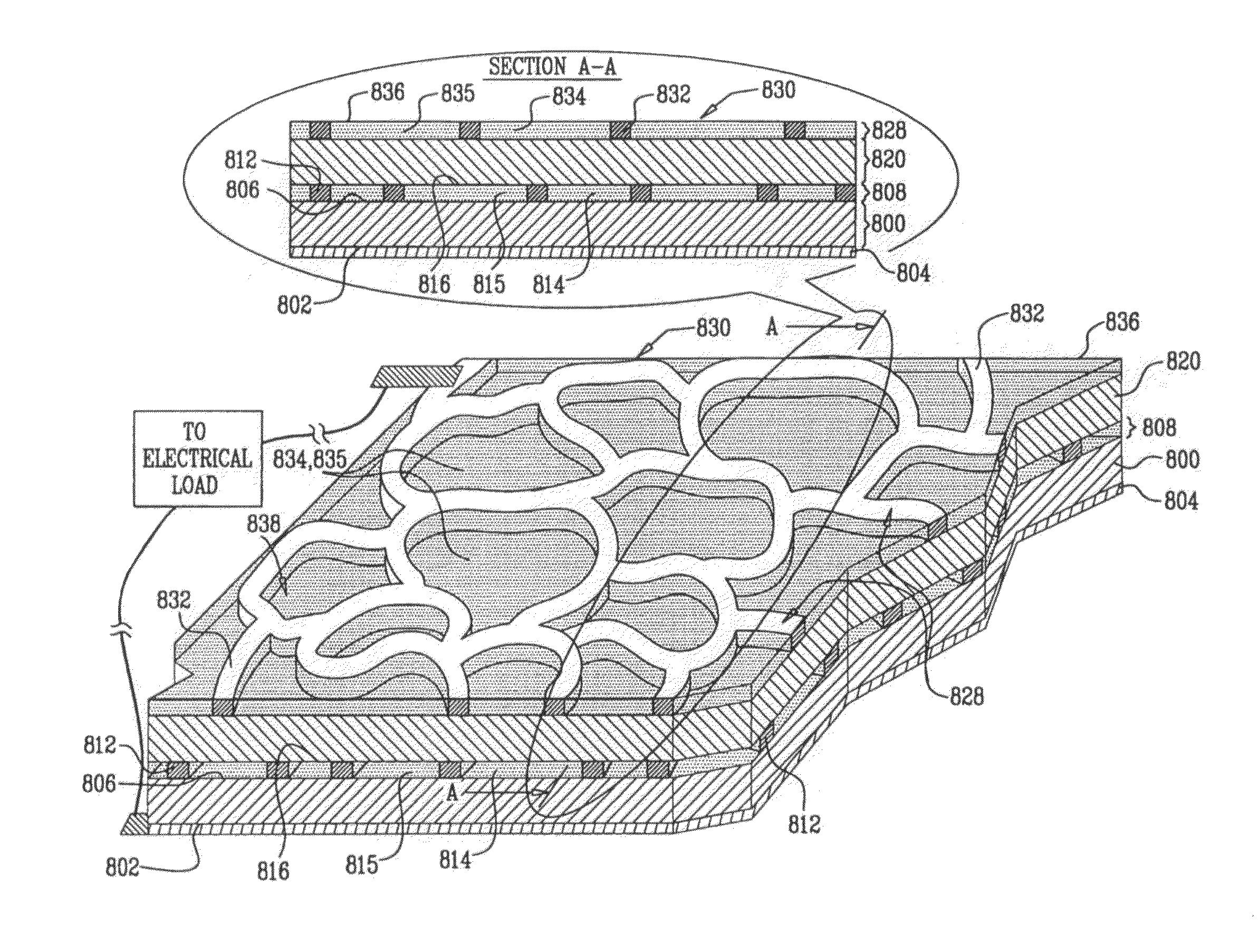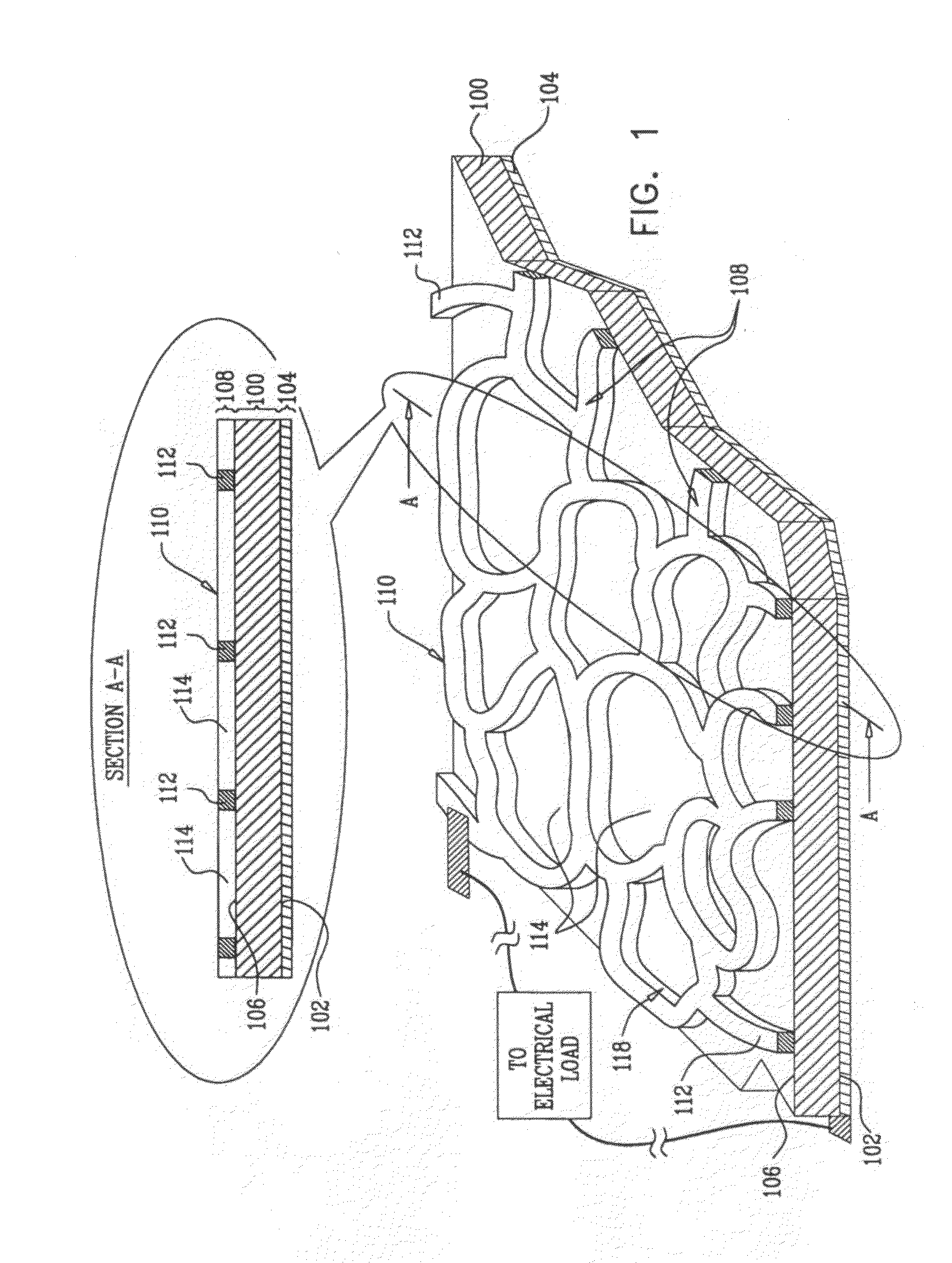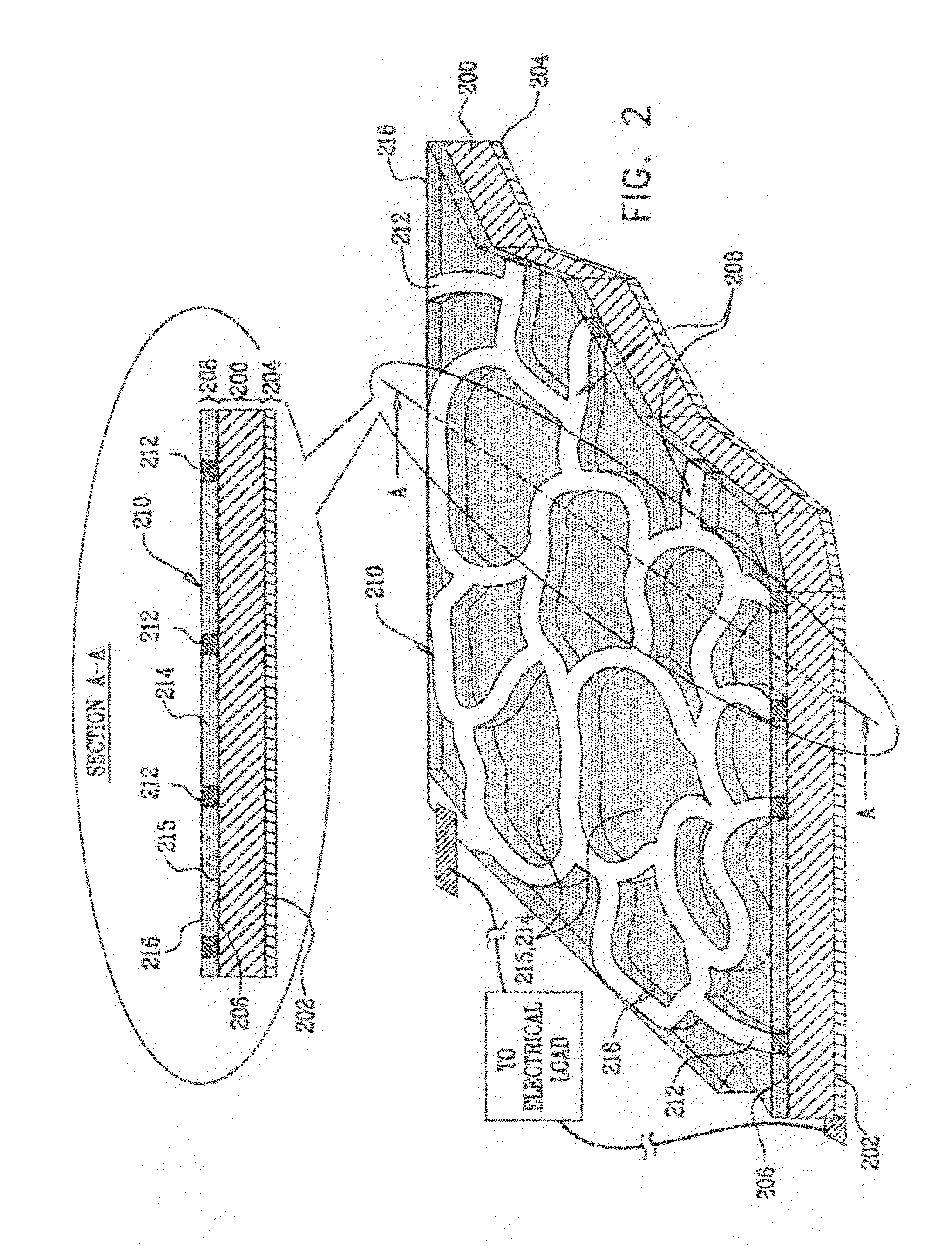Photovoltaic device having transparent electrode formed with nanoparticles
a photovoltaic device and nanoparticle technology, applied in thermoelectric devices, electrically conductive paints, transportation and packaging, etc., can solve the problems of inferior transparency, marginal conductivity, and a large number of ito films
- Summary
- Abstract
- Description
- Claims
- Application Information
AI Technical Summary
Benefits of technology
Problems solved by technology
Method used
Image
Examples
Embodiment Construction
[0038]Reference is now made to FIG. 1, which is a simplified illustration of a device for converting light to electricity in accordance with a one embodiment of the present invention.
[0039]As seen in FIG. 1, the device for converting light to electricity comprises a semiconductor substrate 100 having formed on an underside surface 102 thereof and in effective electrical contact therewith, an electrode 104.
[0040]The semiconductor substrate 100 may be any suitable semiconductor substrate, for example, materials known in the art as inorganic semiconductors, including but not limited to, silicon, geranium, compounds of boron, tellurium, gallium, or tin, and compounds such as gallium arsenide (GaAs), gallium phosphide (GaP), indium phosphide (InP), cadmium telluride (CdTe), cadmium sulphide (CdS), gallium aluminum arsenide (GaAlAs), mercury cadmium telluride (HgCdTe), gallium arsenide phosphide (GaAsP), copper indium gallium diselenide (CIGS), and copper indium selenide or sulfide.
[0041]...
PUM
| Property | Measurement | Unit |
|---|---|---|
| diameters | aaaaa | aaaaa |
| thickness | aaaaa | aaaaa |
| thickness | aaaaa | aaaaa |
Abstract
Description
Claims
Application Information
 Login to View More
Login to View More - R&D
- Intellectual Property
- Life Sciences
- Materials
- Tech Scout
- Unparalleled Data Quality
- Higher Quality Content
- 60% Fewer Hallucinations
Browse by: Latest US Patents, China's latest patents, Technical Efficacy Thesaurus, Application Domain, Technology Topic, Popular Technical Reports.
© 2025 PatSnap. All rights reserved.Legal|Privacy policy|Modern Slavery Act Transparency Statement|Sitemap|About US| Contact US: help@patsnap.com



